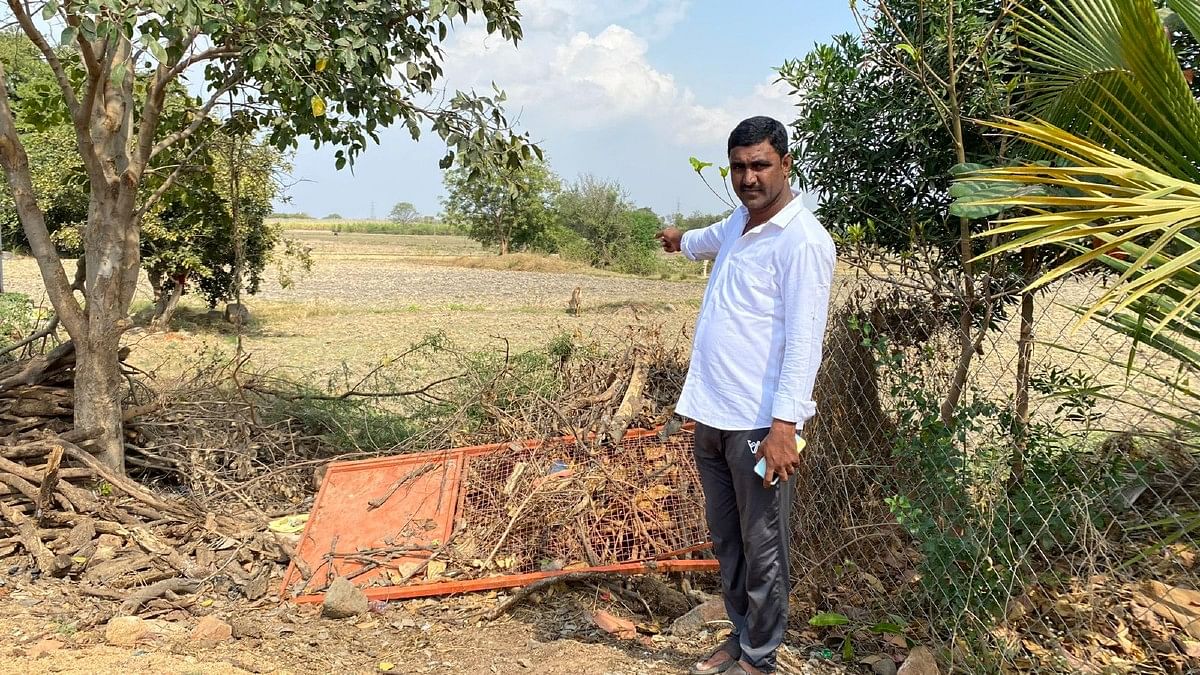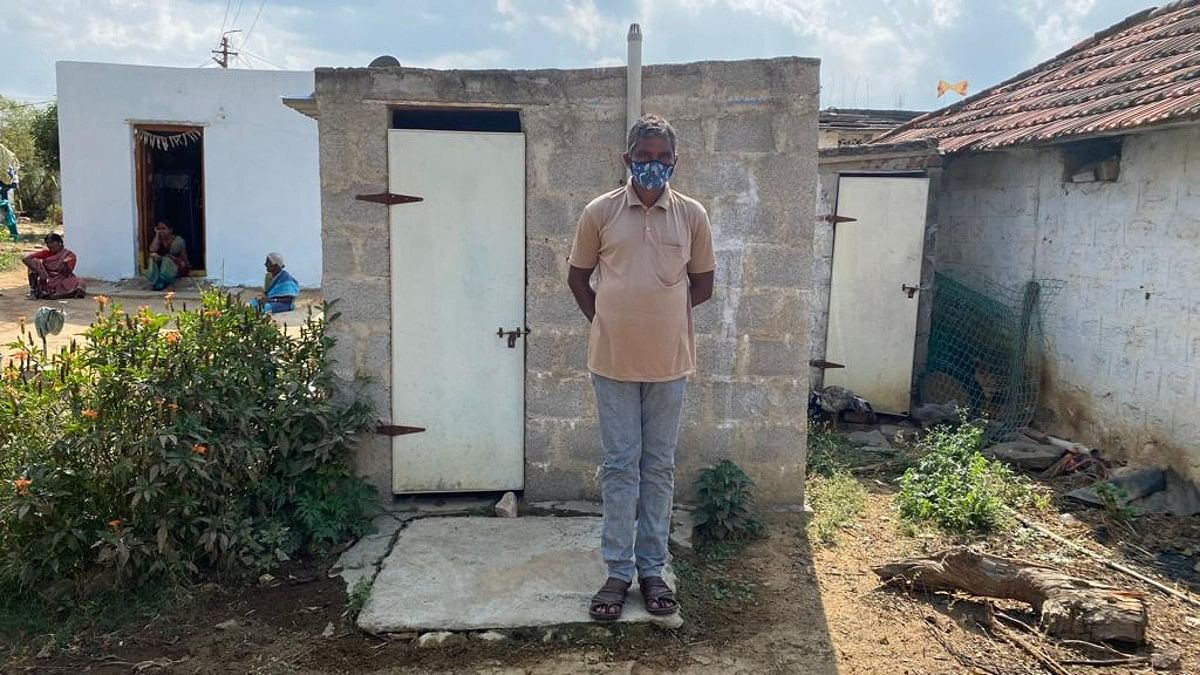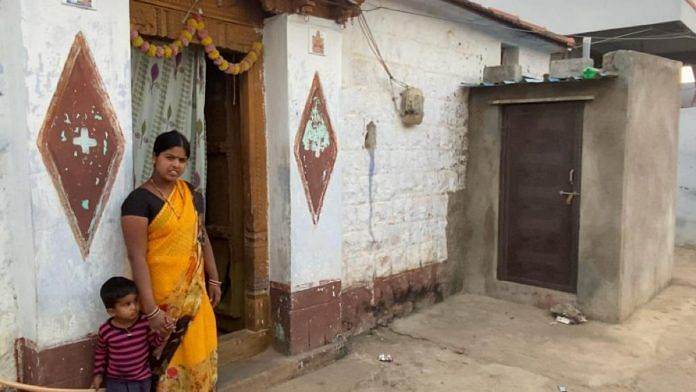Hyderabad: Despite pleading with her husband for three years, Mogalamma, 24, couldn’t convince him to build a toilet in their house. She had been defecating in the open all her life, up until three months ago — when her husband Narsaiah finally agreed to build a toilet.
Not because open defecation was harmful, but due to pressure from the panchayat.
Mogalamma is a resident of Telangana’s Mekavanampalle village, just a few hours away from Hyderabad.
Telangana has the highest number of villages declared ODF+ (Open Defecation Free Plus). This was declared earlier this month under the Centre’s Swachh Bharat Mission (Grameen) Phase-II programme.
About 96.74 per cent — 13,737 out of 14,200 villages in the state — are on the ODF+ list, the “plus” signifying that villages have sustained their ODF status, ensured solid and liquid waste management, and are visually clean, apart from ensuring 100 per cent toilet coverage.
Next in line was Tamil Nadu, with just 35.39 per cent (4,432 villages) categorised as ODF+, and Karnataka at 5.59 per cent (1,511 villages).
Not just the Telangana government, but even the state Swachh Bharat team gives a major share of the credit for the state’s achievement to its ‘Palle Pragathi’ programme, which is aimed at improving the quality of life in villages with better infrastructure and maintenance.
Chief Minister K. Chandrashekar Rao’s flagship programme focuses on decentralised management of villages with district, mandal-level special teams and flying squads.
The first round of the programme was launched in 2019.
According to the state’s Swachh Bharat team, Telangana achieved the ODF target (toilets in 100 per cent households) in 2019, before Palle Pragathi fully came into action.
The ODF+ was given on the basis of the villages achieving effective solid, liquid waste management and providing institutional toilets.
Also read: These are the secrets to Indore’s 5-year ‘cleanest city’ streak. And it’s not rocket science
Dawn & dusk patrols with a whistle and torch
When the Swachh Bharat Mission (SBM) programme was launched in 2014, only 30 per cent of households in the state had toilets and barely any solid waste management, according to SBM officials’ data.
The first step was to get a toilet built in the panchayat secretary’s house in some villages, Suresh Babu, director of the state SBM programme, told ThePrint.
The actual process of making villages ODF started in 2016, almost two years later.
The challenge was not just to build toilets but to keep the sustainability, said Mohammed Shafi, sarpanch of Haridaspur village (Kondapur mandal, SangaReddy district) — one of the best model villages in the state for ODF.
It took almost a year for village volunteers to make sure that no one defecates in the open, despite toilets at home.

These village volunteers are part of the ‘nigrani (surveillance) committee’, formed under every gram panchayat and usually including panchayat representatives.
“I gathered about 20 youth members and formed this committee, I am also part of it. We used to wake up every morning before sunrise — go to the spot where open defecation is done and sit there with torch lights to spot anyone who is violating the rule and whistle at them to stop them and send them back home. The same drill post-sunset,” Shafi said.
“I made a few people sit on top of temple roofs, school roofs to keep an eye on who was walking towards the open land. We did this for more than seven months in 2020,” he added.
Also read: On World Toilet Day, a look at India’s sanitation data and the ground realities
‘No toilet, no rations, electricity’
A walk through the villages visited by ThePrint for this report revealed messages, in Telugu, painted on walls of homes and public structures, saying anyone defecating outside will have to pay a fine of Rs 1,000 every time.
Not just that, they will also have to water 50 plants that day, said Shafi.
The SBM also undertook behavioural campaigns such as asking school children to write letters to their parents asking for a toilet, and gram panchayats taking written assurances from villagers in this regard.
In extreme cases, village people had to be threatened that their electricity supply would be cut off, rations halted, said SBM officials on condition of anonymity.
This was what happened with 45-year-old Dhanayya, a resident of Haridaspur, who said he only considered building a toilet because the panchayat “threatened” him that his monthly rations would be stopped otherwise.
The toilet was built by the end of 2019, but Dhanayya has some complaints.
“I took a gold loan with whatever I had to build a toilet. It cost me Rs 15,000 and I am aware that the reimbursement is only Rs 12,000 but I haven’t received it yet. It has been two years now,” he said. “The entire village came to our house forcing us to build a toilet, I was threatened that I will not get my rations if I do not build the toilet.”

Sarpanch Shafi said that the funds were delayed due to the pandemic, and sought to assure villagers that pending dues should be cleared in the “next few months”.
There are other issues that remain to be addressed as well.
At the Government High School in Haridaspur, the toilets are broken. A few boys playing near the school showed the toilets, behind the building, which are in a shambles.
“Boys urinate here in the open, girls urinate behind the wall. Teachers use one of the broken toilets,” 12-year-old Naveen said, pointing to the broken toilets.
Asked about the condition of these toilets, Shafi said they had broken down after the monsoon season and would be rebuilt.
Also read: From dumping grounds to golf courses — how Indore became India’s cleanest city
‘Pregnant women at home etc’ — why some people ‘don’t want’ toilets
It is inauspicious to build a toilet when there is a pregnant woman at home, it is inauspicious to build a toilet six months after a wedding at home, the toilet does not go with the vastu of the house, it makes the house impure — these are some of the excuses that people allegedly offered sarpanches when asked to build a toilet.
About an hour away from Haridaspur is Mekavanampalle — where the older population is finding it hard to use toilets and are resorting to open defecation, said 31-year old sarpanch Sashidhar Reddy. The population of the village is 2,500.
“There are about 120 senior citizens in the village and they still defecate outside. I would be bluffing if I say all of them are using toilets,” he added. “But, we are taking steps. They say it is suffocating, their knees ache. For decades, they have been going outside, so it is hard to convince them in a few weeks or months. There were instances when people refused to build toilets — we had to forcibly take JCBs to their home and get the work done.”
How ‘Palle Pragathi’ helped
“Palle” loosely translates to a village habitat, and “pragathi” means development.
This programme was launched with the aim of making villages “clean and green”.
In January 2020, the chief minister said the government has been releasing Rs 339 crore every month for the programme.
A crucial part of ODF+ is solid and liquid waste management.
Although the Swachh Bharat Mission does make solid waste management mandatory to achieve the ODF+ tag, there are no separate funds allotted for this task.
Shravya Reddy, the state Solid and Liquid Waste Management Consultant from SBM, said the Palle Pragathi teams helped with the operation and management of the toilets they built.
“Building a toilet is not the only solution, operation and management are also crucial for sustainability. Funds for maintenance, sanitation workers are not provided under SBM,” she added.
In SangaReddy’s Aliabad village, one of the first to be declared ODF by 2016, solid waste management is on the same scale, said sarpanch Syed Faheem.
In most villages, every house is provided with two bins (green and blue) for dry and wet waste segregation. Everyday, a tractor tours the village to collect the garbage.
In Haridaspur, Shafi said he had to go door-to-door, accompanying the tractor, to ensure people dispose of garbage in the right way.
The more frequent the tractor trips, fewer were the heaps of garbage being thrown on roads in the village, he said.
Haridaspur now has something called ‘kitchen gardens’ — small plants are being grown where once heaps of garbage used to lie around. Similar was the situation in Mekavanampalle village, where the sarpanch goes door-to-door for garbage collection.
Several villages have also been given segregation-cum-compost sheds for garbage disposal and processing.
Vermicompost, processed, out of wet waste was given to the green belt of villages.
Tractors are an important aspect of solid waste management.
Under Palle Pragathi, all gram panchayats were given tractors with trolleys and tankers, and, besides this, regular cleaning of all the public buildings such as government schools, hospitals, anganwadis was done.
“One tractor costs about Rs 8 lakh and that was given to villages under Palle Pragathi. Household soakpits and community soakpits were constructed for water disposal,” said Shravya.
“Drain lines were being done. More number of panchayat secretaries were hired, district-, mandal-level teams were formed — so all these helped us implement the programme very smoothly.”
Also, it is the field-level workers from Palle Pragathi who upload data on maintenance of villages on their apps. The same is taken and reflected on the SBM (G) 2.0 mobile app – which is in turn shown on the national dashboard, ensuring smooth flow of data.
(Edited by Manoj Ramachandran)
Also read: Covid crisis has exposed gaps in urban Swachh Bharat Mission. It must be revamped



